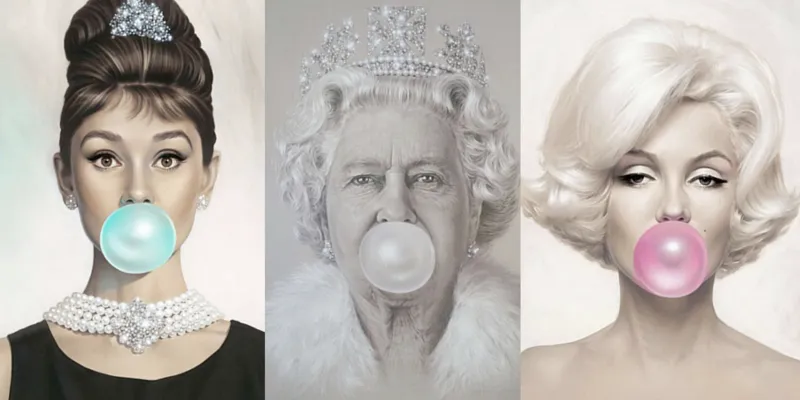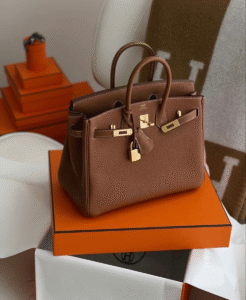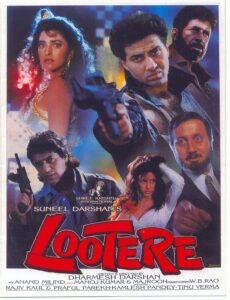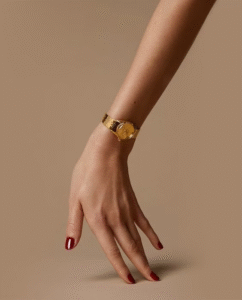Art has always been about originality. Every brushstroke, every idea, every detail is a projection of the artist’s vision and imagination. For centuries owning a painting meant owning a piece of that vision, making it rare and unique. The very premise of owning art lies in its subjectivity to the consumer and attachment or meaning to such artifacts. But what happens when that very essence of uniqueness is stripped away? When an artwork that was meant to be one of a kind is suddenly sold throughout the world for a fraction of the cost? The institution of artistic ownership crumbles down into pieces.

“The worst thing that can happen to an artist is to lose their uniqueness.” – Salvador Dalí
Art can never be just about aesthetics – it reflects the intent of the artist, the hours of creative labour spent on it, and the story it is meant to tell. Yet, in a world driven by instant gratification and mass consumption, originality is under siege. With a single click, high-quality digital copies of paintings can be reproduced and circulated across the globe, turning something deeply personal into just another commodity.
This shift has left both artists and collectors grappling with some important questions: If art can be endlessly copied and resold, does authenticity still matter? And more importantly, how can artists protect what is inherently theirs in an era where everything is up for grabs?
Michael Moebius: The Wizard of Pop-Art
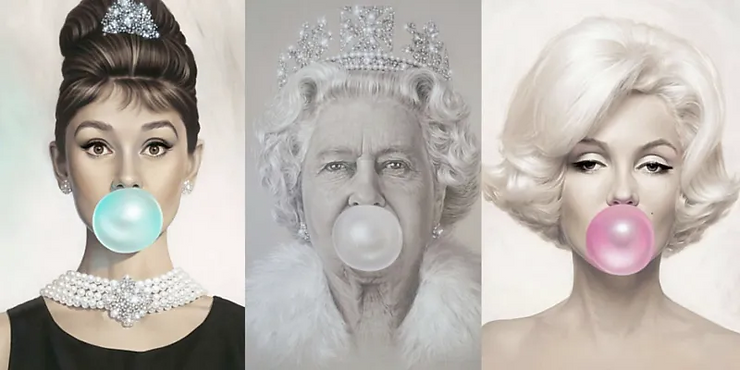
Welcome to the world of Michael Moebius, the German artist whose hyper-realistic pop art transforms cultural icons into something refreshingly new. His “bubblegum series”—depicting legendary figures like Marilyn Monroe, Queen Elizabeth II, and even Mickey Mouse with a cheeky bubblegum bubble—has not only graced galleries worldwide but has become a defining image of modern pop art.
Born in 1968 in Pirna, Germany, Moebius’s early artistic aspirations were stifled by the rigid expectations of communist East Germany, which led him to pursue engineering and construction. But everything changed when he stumbled upon a book featuring Alberto Vargas’s pin-up art. That moment set him on a new path—one dedicated to figurative art, a genre that captures real-world subjects with striking realism.
Determined to refine his craft, Moebius studied painting at the Academy of Arts in Dresden and after the fall of the Berlin Wall, he seized the opportunity to move to the United States in 1998, immersing himself in a culture that would heavily influence his work. The U.S. art scene at the time was a mix of traditional and contemporary styles, offering artists global exposure and commercial success. Programs like Save America’s Treasures reflected a growing national appreciation for the arts, making it an ideal environment for the artist to thrive.

Over the next few years, Mobeius’s art gained traction, drawing attention from high-profile collectors and brands like Playboy, Procter & Gamble, Laura Biagiotti, Vogue, and Vanity Fair, propelling his art into the mainstream. His bubblegum portraits, especially those of evergreen pop-culture icons and divas, became an instant sensation, even making their way onto the cover of The Robb Report, a major luxury publication in America.
Artist’s Rights Under Attack:The Rise of Art Forgery
However, fame came with an unexpected challenge: counterfeiters flooded the market with unauthorized reproductions of Moebius’s work onto daily-use items such as posters, t-shirts, phone covers, etc. Moebius’s weeks of effort, skill, and artistry were replicated within hours. But also posed a great risk of detriment to his reputation as an artist.

Art forgery, – the creation or sale of artworks falsely attributed to a well-known artist,- is far from a new problem, but the advent of the digital age has only exacerbated it. As per FBI estimates art forgery accounts for as much as $6 billion annually, in fact, a study in 2014 found that more than 50% of art sold online could be inauthentic since there are no proper means of authentication. These figures thought to be only the tip of the iceberg highlight the scale of the crisis and the urgent need for stronger enforcement.
The biggest challenge however when it comes to art forgery is enforcement. With easy access to digital copies of the paintings, infringers can replicate and sell counterfeits online, fueling art forgery and piracy. This makes enforcement complex, especially when infringers operate across multiple countries and often under guises/aliases or anonymity. This means that even if the artists can secure a favorable order, it might sometimes be impossible to track down and stop every unauthorized reproduction of the copyrighted work.
Moebius is not the first artist to counter this problem. British street artist Banksy has fought several trademark battles to prevent commercial exploitation of his anonymous identity, facing attempts by companies to register his artwork under their name for merchandising purposes. Since copyright law requires a legal identity for enforcement, infringers have exploited this loophole, leading to disputes over trademark ownership and the unauthorized commercialization of his art—often intended as social commentary— without his consent.

In other instances, Japanese contemporary artist, Takashi Murakami discovered counterfeits of his iconic flower designs flooding Asian markets. Takashi while initiating legal proceedings against counterfeiters also collaborated with Yayoi Kusamaa, a legendary avant-garde artist famous for her polka-dot motifs and immersive installations,- and confronted Chinese exhibitions showcasing fake versions of their artworks without consent. Legal action forced at least one fraudulent exhibition to shut down in Shanghai, bringing attention to the rampant issue of counterfeiting in the Asian art market.
Similarly, Chinese artist, Ye Yongqing was exposed for plagiarizing Belgian artist, Christian Silvain for over 25 years, replicating his signature bird motifs and compositions. The scandal culminated in a public apology and a court-ordered damages payment, reinforcing the consequences of artistic theft.
Moebius, however, took one of the most aggressive legal stands in recent history. The rise of his bubblegum portraits attracted not only collectors but also counterfeiters eager to profit from his success. From online stores to street markets, counterfeit prints were everywhere, making it hard to tell the real from the fake. Many buyers, unaware they were purchasing knockoffs, ended up with cheap imitations—diminishing the worth of Moebius’s work and casting doubt on the integrity of the art world.
The Counterfeit Crisis: Moebius’s Lawsuit against 399 Companies
Determined to reclaim the rights to his work, Moebius filed a lawsuit against 399 companies from different countries selling counterfeit versions of his artwork. The case was brought before the U.S. District Court for the Northern District of Illinois, a federal court known for handling complex international copyright disputes.

Moebius’s aggressive legal strategy under the Copyright Act of 1976, focused on the artist’s exclusive rights over reproduction and distribution. As per intellectual propert+y laws, copyright protection applies automatically the moment a painting, drawing, or digital artwork is created and recorded in a tangible form. No paperwork or registration is required. This meant that Moebius, like any other artist such as painters, illustrators, graphic designers, and digital artists, had full control over who could reproduce, sell, or distribute his art. If someone copied his work without permission, even with minor modifications, it constituted copyright infringement.
Taking counterfeiters to court can be complicated, especially when they operate across borders. Instead of trying to track how much money each infringer made from selling fakes, Moebius relied on a legal shortcut. Statutory damages under 17 U.S. Code § 504 allow artists to claim damages without having to prove actual financial loss. The standard payout increases if the infringement is found to be wilful, i.e. the counterfeiters stole his artwork with complete knowledge and intention. This is called willful infringement.
Many of these companies operated under shell identities, avoiding detection and refusing to respond to legal notices. Because they failed to respond, the court proceeded without them in what is called an ex-parte proceeding. This meant the case moved forward with only Moebius presenting his claims. Resultantly, Moebius secured a default judgment, in his favour.
In 2023, the court awarded Moebius a jaw-dropping $120 million in damages—the largest amount ever granted to a living independent artist in a copyright infringement case. The court also issued sweeping orders of ‘permanent injunctions’, banning the counterfeiters from selling or distributing Moebius’s artwork. Additionally, ‘domain forfeiture’ required the companies to transfer their website domains to Moebius, effectively shutting down their ability to sell counterfeit prints.
What Moebius’s Victory Means for Artists
Moebius’s victory represents more than a personal triumph; it sets an important precedent for artists and creators everywhere. The ex-parte judgment sends a powerful message that intellectual property, particularly the rights of creators over their work, will be vigorously defended in a court of law.
But this fight is far from over. While independent counterfeiters are easier to target, what happens when the infringer isn’t just a small operation, but a global giant with billions in revenue?
Moebius Sues Shein for Copyright Theft
In November 2022, Moebius filed a lawsuit against Shein Distribution Corporation in the U.S. District Court for the Central District of California, alleging unauthorized use of his copyrighted designs, notably his bubblegum portraits of pop-culture icons. In July 2023, Moebius submitted an amended complaint to address Shein’s complex corporate structure, aiming to prevent the company from evading liability.
“I hope this case sets another precedent that multinational companies must be responsible for all of their actions, not just in the area a lawsuit happens,” Moebius stated. Instead of fighting dozens of fragmented battles, he seeks a ruling that will force global accountability.
Moebius’s legal team relied on two key legal theories:
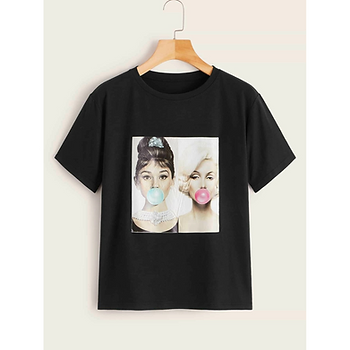
1. The Delayed Discovery Rule – Copyright infringement claims typically expire after three years. However, the delayed discovery rule says the countdown starts when the artist finds out about the infringement, not when it first happened.
In Moebius’s case, even if Shein had copied his work earlier, he only discovered it on January 20, 2020. Because of the delayed discovery rule, he could still sue Shein, even though more than three years had passed since the alleged infringement first occurred.
2. The Server Test – Companies like Shein sell products worldwide through different websites for different countries (e.g., shein.com in the U.S., shein.co.uk in the UK, etc.). However, the images of the products, including the ones copying Moebius’s work, were stored on U.S.-based servers (including img.shein.com and img.ltwebstatic.com). Moebius argued that because Shein stored and used infringing images on U.S. servers, the infringement technically happened in the U.S. first, even if the copied designs were later sold in other countries. This could allow him to claim damages not just for sales in the U.S., but worldwide.
Shein’s complex corporate structure makes it difficult for artists to sue due to jurisdictional challenges. Moebius’s lawsuit targeted Roadget, a Singapore-based entity that holds Shein’s intellectual property. By linking all Shein entities through Roadget, he sought to establish global liability. U.S. trademark records confirm Shein’s trademarks are registered under Roadget, strengthening the case.
“Shein uses different copies of the same website to sell their products in different countries,” Moebius explained. “It makes it difficult to get justice in one shot, which should not be the case, especially considering we are talking about a $100 billion company.”
Moebius also challenged Shein’s ability to use the Digital Millennium Copyright Act of 1998 (DMCA) as a shield. While platforms like YouTube avoid liability for user-generated content, he argues that Shein had control over the infringement and the power to stop it. If the court agreed, it could have set a precedent limiting how online marketplaces use the DMCA to escape responsibility.
On November 8, 2024, Moebius filed a stipulation to dismiss the case. The court records don’t reveal whether a settlement was reached, if the case hit a legal roadblock, or if Moebius decided to take a different route. Shein might have cut a deal behind closed doors as it has previously done, but without an official statement, it’s all speculation.
Michael Moebius’ legal battle is a playbook for artists on how to tackle copyright infringement head-on. After bagging a $120 million win against counterfeiters, he’s now taking on Shein, the fast-fashion giant notorious for ‘borrowing’ designs. His message to artists? Know your rights, call out the copycats, and don’t let corporations hide behind legal loopholes.
Copyright law isn’t just for fine print, it’s your armor.

